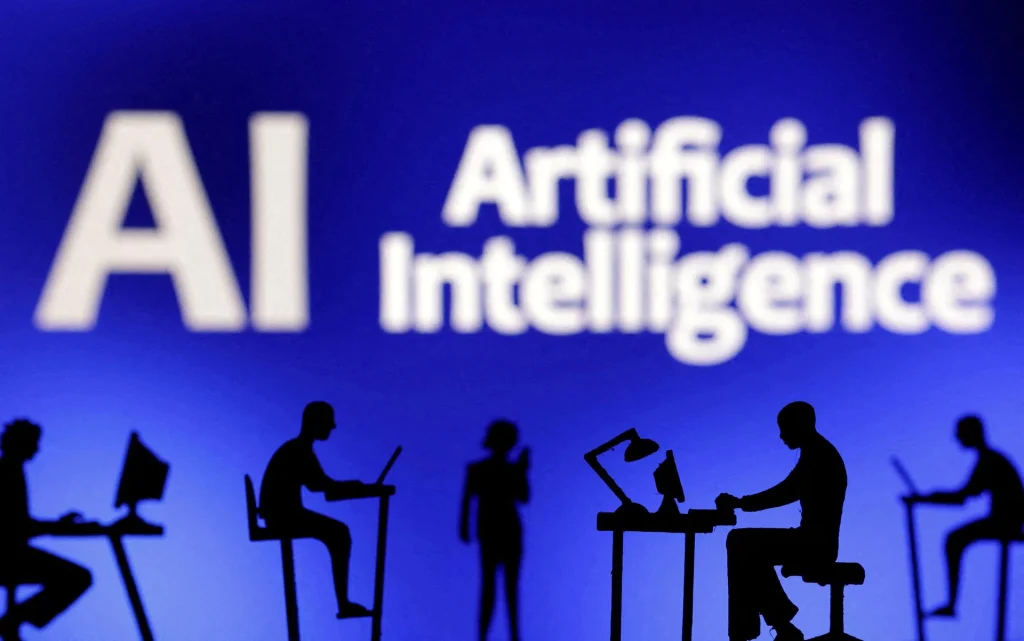[NEW YORK] Some investors are questioning the amount of cash Big Tech is throwing at artificial intelligence, fuelling concerns for profit margins and the risk that depreciation expenses will drag stocks down before companies can see investments pay off.
“On a cash flow basis they’ve all stagnated because they’re all collectively making massive bets on the future with all their capital,” said Jim Morrow, founder and chief executive officer at Callodine Capital Management. “We focus a lot on balance sheets and cash flows, and so for us they have lost their historical attractive cash flow dynamics. They’re just not there anymore.”
Alphabet, Amazon.com, Meta Platforms and Microsoft are projected to spend US$311 billion on capital expenses in their current fiscal years and US$337 billion in 2026, according to data compiled by Bloomberg. That includes a more than 60 per cent increase during the first quarter from the same period a year ago. Free cash flow, meanwhile, tumbled 23 per cent in the same period.
“There is a tsunami of depreciation coming,” said Morrow, who is steering clear of the stocks because he sees profits deteriorating without a corresponding jump in revenue.
Much of the money is going towards things like semiconductors, servers and networking equipment that are critical for artificial intelligence computing. However, this gear loses its value much faster than other depreciating assets like real estate.
Microsoft, Alphabet and Meta posted combined depreciation expenses of US$15.6 billion in the first quarter, up from US$11.4 billion a year ago. Add in Amazon, which has pumped more of its cash into capital spending in lieu of buybacks or dividends, and the number nearly doubles.
BT in your inbox

Start and end each day with the latest news stories and analyses delivered straight to your inbox.
“People thought AI would be a monetisation machine early on, but that hasn’t been the case,” said Rob Almeida, global investment strategist at MFS Investment Management. “There’s not as fast of AI uptake as people thought.”
AI bounce
Of course, investors still have a hearty appetite for the technology giants given their dominant market positions, strong balance sheets and profit growth that, while slowing, is still beating the rest of the S&P 500. This explains the strong performance of AI stocks recently.
Since April 9, the day President Donald Trump paused his global tariffs and turned a stock market swoon into a boom, the biggest AI exchange-traded fund, the Global X Artificial Intelligence & Technology ETF, is up 34 per cent, while AI chipmaker Nvidia Corp. has soared 49 per cent. Meta has gained 38 per cent, and Microsoft has climbed 33 per cent – all topping the S&P 500’s 21 per cent jump and the tech-heavy Nasdaq 100 Index’s 28 per cent bounce.
Just Tuesday, Bloomberg News reported that Meta leader Mark Zuckerberg is recruiting a secretive AI brain trust of researchers and engineers to help the company achieve “artificial general intelligence,” meaning creating a machine that can perform as well as humans at many tasks. It’s a monumental undertaking that will require a vast investment of capital. And in response Meta shares reversed Monday’s decline and rose 1.2 per cent.
But with more and more depreciating assets being loaded on the balance sheet, the drag on the bottom line will put increased pressure on the companies to show bigger returns on the investments.
Dealing with depreciation
This is why depreciation was a frequent theme in first-quarter earnings calls. Alphabet chief financial officer Anat Ashkenazi warned that the expenses would rise throughout the year, and said management is trying to offset the non-cash costs by streamlining its businesses.
“We’re focusing on continuing to moderate the pace of compensation growth, looking at our real estate footprint, and again, the build-out and utilisation of our technical infrastructure across the business,” she said on Alphabet’s April 24 earnings call.
Other companies are taking similar steps. Earlier this year, Meta Platforms extended the useful life period of certain servers and networking assets to five and a half years, from the four-to-five years it previously used. The change resulted in a roughly US$695 million increase in net income, or 27 cents a share, in the first quarter, Meta said in a filing.
Microsoft did the same in 2022, increasing the useful lives of server and networking equipment to six years from four. When executives were asked on the company’s April 30 earnings call about whether increased efficiency might result in another extension, chief financial officer Amy Hood said such changes hinge more on software than hardware.
“We like to have a long history before we make any of those changes,” she said. “We’re focused on getting every bit of useful life we can, of course, out of assets.”
Amazon, however, has taken the opposite approach. In February, the e-commerce and cloud computing company said the lifespan of similar equipment is growing shorter rather than longer and reduced useful life to five years from six.
To Callodine’s Morrow, the big risk is what happens if AI investments don’t lead to a dramatic growth in revenue and profitability. That kind of market shock occurred in 2022, when a contraction in profits and rising interest rates sent technology stocks plummeting and dragged the S&P 500 lower.
“If it works out it will be fine,” said Morrow. “If it doesn’t work out there’s a big earnings headwind coming.” BLOOMBERG


